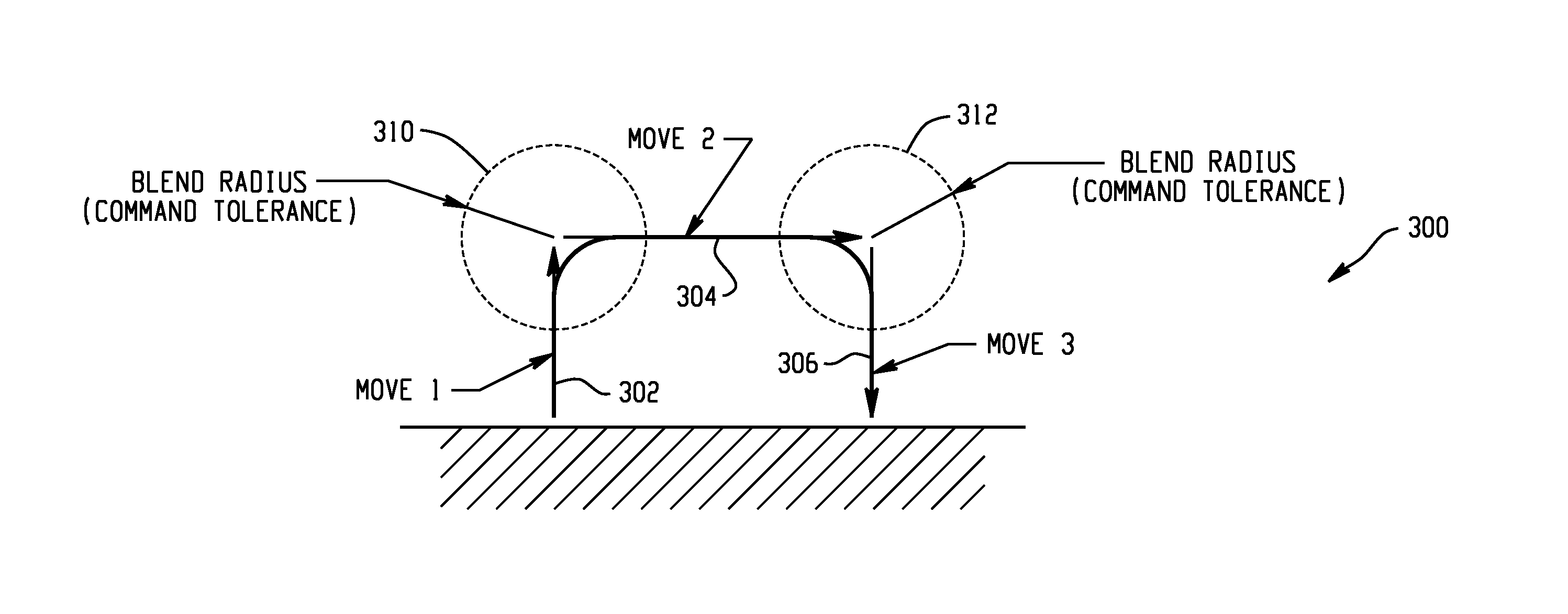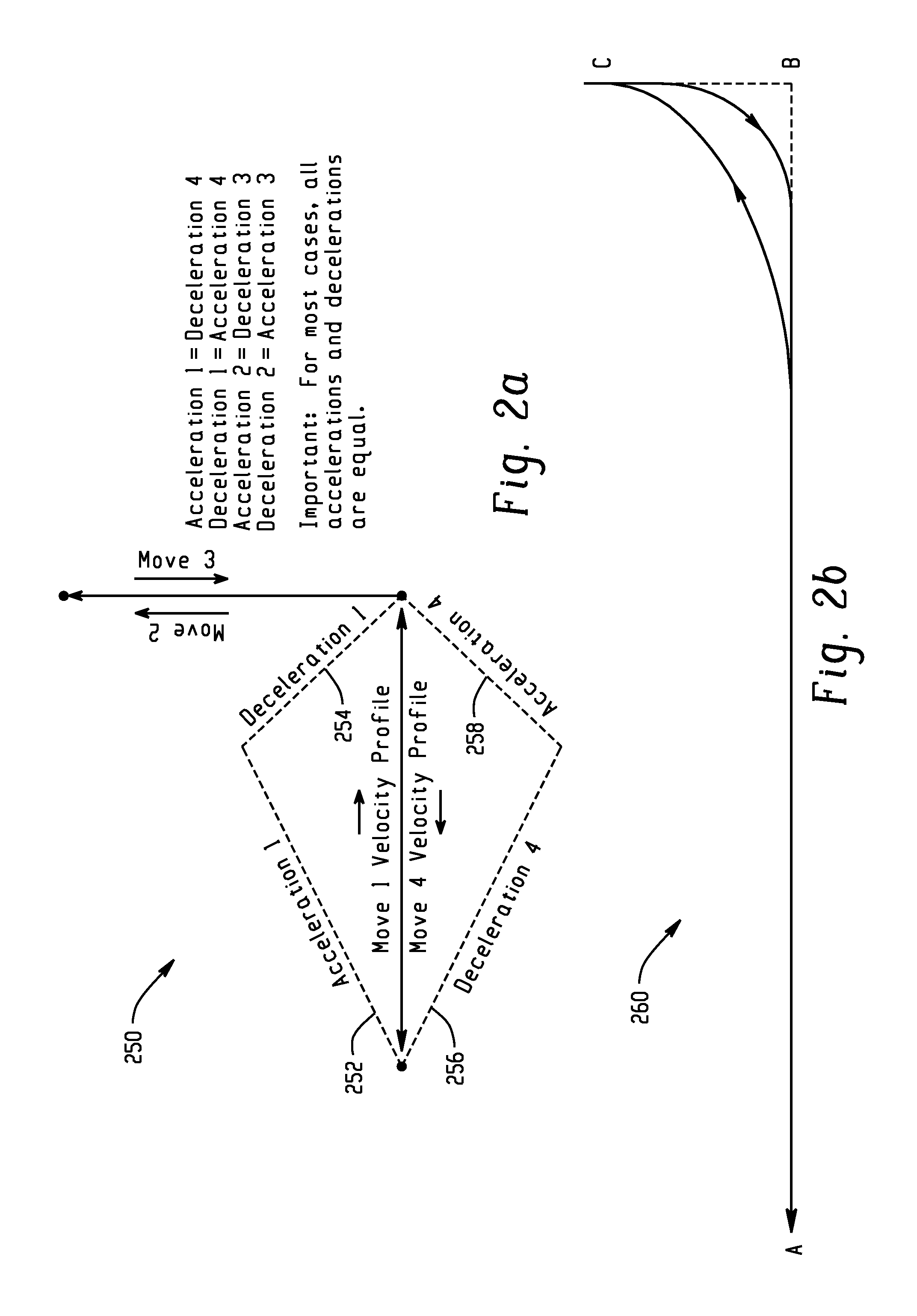Blending algorithm for trajectory planning
a technology of trajectory planning and blending algorithm, which is applied in the direction of electric programme control, program control, instruments, etc., can solve the problems of program motion transition between each of the plurality of disparate paths, undesired motion, undesired movement, and associated deleterious effects
- Summary
- Abstract
- Description
- Claims
- Application Information
AI Technical Summary
Benefits of technology
Problems solved by technology
Method used
Image
Examples
Embodiment Construction
[0030]Standard blending algorithms can generate trajectories which are not symmetric (e.g., trajectory from a start point to an end point is not the same as that from the end point to a start point) and which do not always stay close to their asymptotes. Blending starts when a profile reaches its blend point during its travel. Utilizing conventional algorithms, blending can begin at the point where a profile start to decelerate or at the point where a profile's remaining distance to go is less than a predefined limit. Such algorithms are dependent solely on information related to the currently executed move and are not concerned with moves to be executed subsequently. As a result, the trajectory from a start point to an end point is typically different than the trajectory from an end point to a start point. The improved algorithm, described herein, removes such deficiencies by delaying the moment when blending starts by a predetermined time delay and / or adjusting the dynamics of the...
PUM
 Login to View More
Login to View More Abstract
Description
Claims
Application Information
 Login to View More
Login to View More - R&D
- Intellectual Property
- Life Sciences
- Materials
- Tech Scout
- Unparalleled Data Quality
- Higher Quality Content
- 60% Fewer Hallucinations
Browse by: Latest US Patents, China's latest patents, Technical Efficacy Thesaurus, Application Domain, Technology Topic, Popular Technical Reports.
© 2025 PatSnap. All rights reserved.Legal|Privacy policy|Modern Slavery Act Transparency Statement|Sitemap|About US| Contact US: help@patsnap.com



